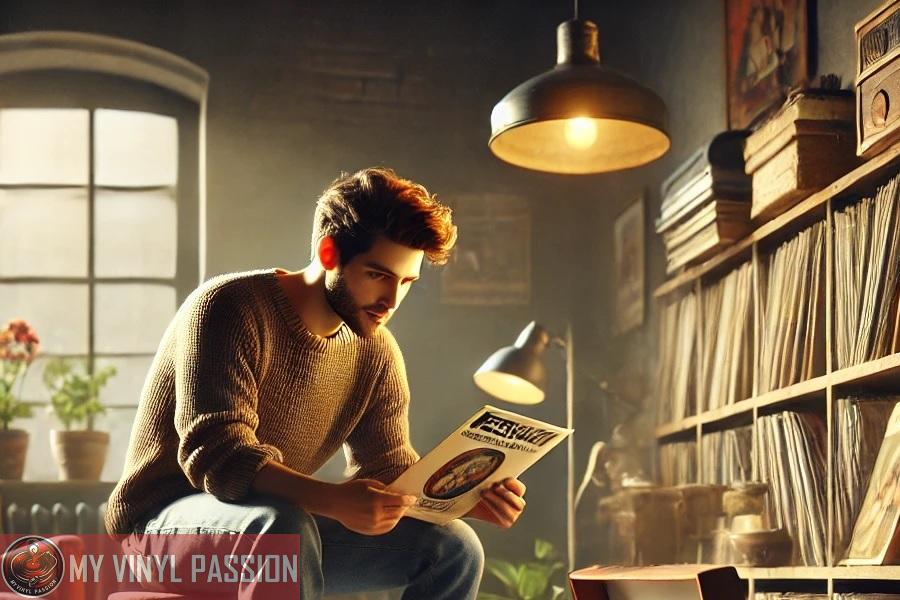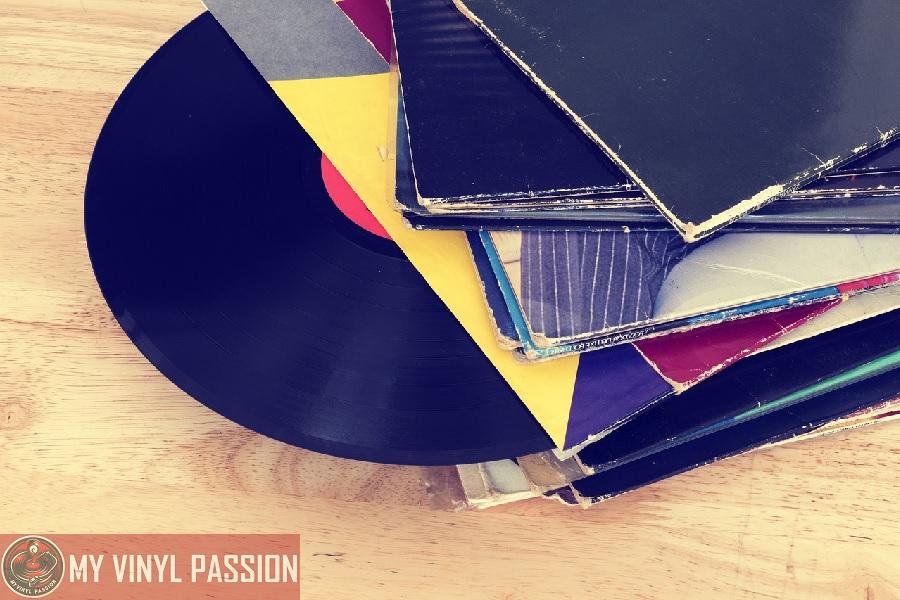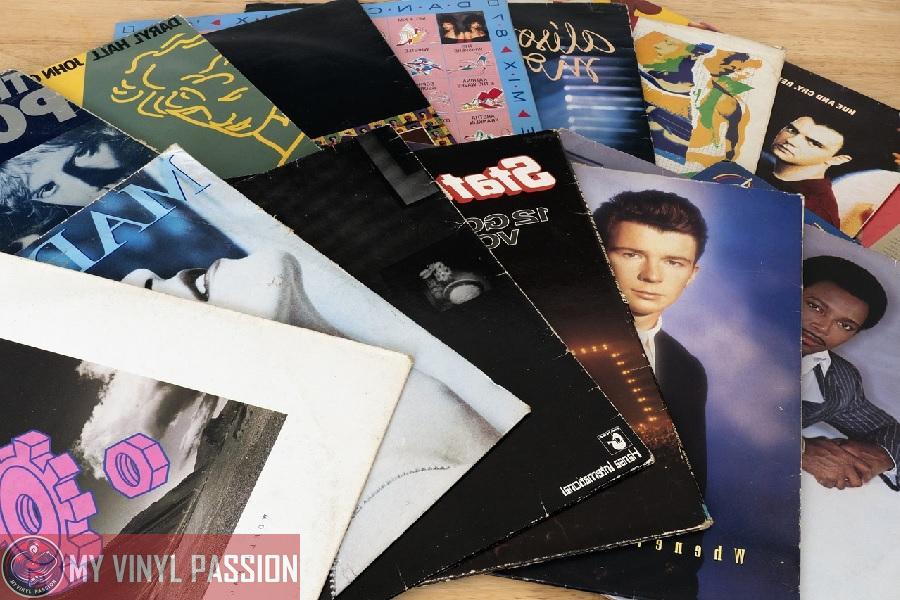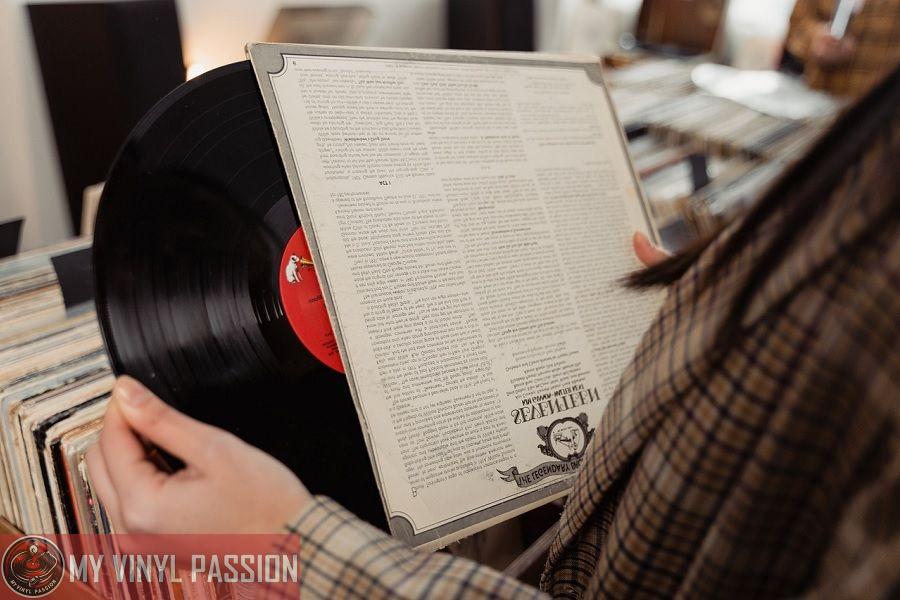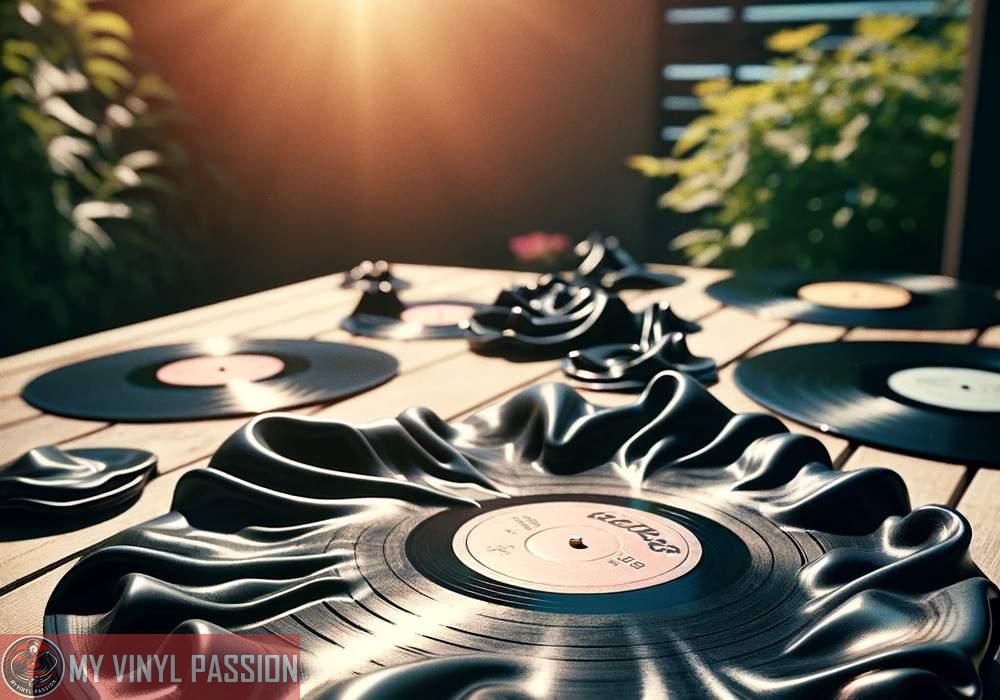If you’ve ever pulled a brand-new LP from its sleeve and felt the static crackle under your fingertips, you already know why vinyl record collecting is enjoying its biggest sales surge since 1987.
Unlike digital formats, vinyl offers a unique listening experience characterized by rich, warm sound quality and an engaging ritual of handling and playing records. To begin, you need to understand the basics of setting up a collection, which includes choosing a good quality turntable, learning how to care for your records, and knowing where to find that perfect addition to your growing assembly of music.
It’s important to approach this hobby with patience; building a meaningful collection doesn’t happen overnight. Each vinyl you select is an investment not just in the music itself, but in the culture and technology that has been with us for over a century now.
After spending 17 years testing turntables and grading more than 6000 used records behind the counter, I’ve distilled everything beginners ask into one clear, step-by-step playbook.
In Summary
Start with music you genuinely enjoy, focusing on affordable reissues or clean used copies of favorite albums to build a collection that feels personal and motivating.
Invest in the essentials early, opting for a reliable entry-level turntable, balanced cartridge, and basic cleaning kit to ensure great sound and protect every record you buy.
Adopt smart collecting habits by learning record-grading terms, storing discs vertically in inner and outer sleeves, and keeping them away from heat, sunlight, and moisture.
Setting Up Your Vinyl Experience
Embarking on the journey of vinyl collection requires attention to detail and a keen sense of quality to ensure the best auditory experience. Setting up your vinyl environment is about pairing a reliable turntable with the right speakers and accessories for an immersive sound experience.
Choosing the Right Turntable
When selecting a turntable, consider both the quality of the components and the type of motor. For those new to vinyl, a belt-driven turntable often provides sufficient audio fidelity at a more affordable price point. Brands like Audio-Technica are well-regarded for their beginner-friendly models. Look for a turntable with a solid platter that can guarantee stable rotation, which heavily influences sound consistency. Additionally, a well-crafted tonearm is essential—it impacts how the needle reads the grooves of your vinyl. Pro-Ject is one brand that offers high-quality components, ensuring accurate tracking and minimal record wear.
| Feature | Recommendation | Brand Example |
|---|---|---|
| Motor | Belt-driven for beginners | Audio-Technica |
| Platter | Heavy, stable | Pro-Ject |
| Tonearm | Precision crafting | Pro-Ject/Audio-Technica |
Selecting Speakers and Accessories
Your vinyl experience will not be complete without speakers that can accurately translate the turntable’s output into clear and dynamic sound. Passive speakers paired with a suitable amplifier can offer a high-quality soundstage. However, for a more compact setup, powered speakers with built-in amplifiers might be preferable. The choice between passive and powered speakers will hinge on your room’s size and the level of control you want over the audio setup.
Accurate sound reproduction also depends on the accessories you choose. A record player mat can reduce vibration and static, and a record brush can aid in keeping your vinyl dust-free for a pure listening experience. Remember, the quality of your accessories can be as crucial as the record player itself for an authentic vinyl experience.
| Accessory | Purpose | Benefit |
|---|---|---|
| Record Mat | Reduce vibration and static | Improved sound clarity |
| Record Brush | Maintain vinyl cleanliness | Longevity of records and stylus |
By making informed choices about your equipment, you’ll be one step closer to shaping a vinyl experience that’s as rich and rewarding as the music itself.
Building Your Collection
Starting a vinyl record collection is an engaging hobby that allows you to experience music in a unique way. When building your collection, consider diversifying genres and periods, which brings richness to your music library. Let’s look at where you can find vinyl records to kickstart your collecting journey.
Finding a Local Record Store
Your local record store is a treasure trove for vinyl enthusiasts. These stores often have staff who share your passion for vinyl and can provide personalized recommendations. When you visit, you may find limited editions, colored vinyl, and records from local artists that aren’t available elsewhere. Moreover, flipping through the bins at a local store adds a tangible and nostalgic experience to building your collection.
Online Marketplaces and Other Sources
For convenience and variety, online marketplaces are invaluable. Sites like Discogs offer an extensive catalog where you can hunt for rare gems or specific pressings. Additionally, platforms like eBay or Amazon are accessible for quickly finding and purchasing records. When venturing into online purchasing, read seller reviews to ensure the quality and authenticity of your vinyl.
Understanding Vinyl
Vinyl records, or simply vinyl, are analog sound storage mediums in the form of a flat disc with an inscribed, modulated spiral groove. The groove usually starts near the periphery and ends near the center of the disc. Here’s what you need to know as you start your collection:
Composition: Vinyl is typically made from polyvinyl chloride (PVC), which is what gives the records their name.
Formats: Records come in different sizes and rotations per minute (RPM). The most common formats are:
- 7-inch singles, which rotate at 45 RPM
- 12-inch LPs, or long-playing records, spinning at 33 1/3 RPM
- 10-inch records can vary in RPM
Sound Quality: Vinyl’s sound is often considered warmer and richer in tone than digital formats, due to its analog nature. This means you’re experiencing the audio as close to the original performance as possible.
Care and Maintenance:
- Keep records free from dust using a soft, anti-static brush.
- Store them vertically in a cool, dry place.
- Handle the edges and labeled part of the disc to avoid getting oils from your fingers on the grooves.
When purchasing vinyl, inspect the grading of the record which tells you its condition. Grading ranges from Mint (M) to Poor (P), and often impacts the value.
The experience of collecting and playing vinyl is as much about the ritual as it is about listening. Embrace the physicality of dropping the needle on a fresh record and make each listen an event in your music appreciation journey.
Remember, each record is a piece of history, carrying the legacy and craftsmanship of generations. Your journey in vinyl collection will not only enrich your musical repertoire but connect you profoundly with music’s tangible and resonant past.
Caring for Your Vinyl Records
Proper care and maintenance of your vinyl records are crucial to preserve their sound quality and longevity. It’s not just about aesthetics; it’s about maintaining the integrity of the audio experience.
Cleaning and Maintenance
To clean your records, use a soft, anti-static brush before and after each play to remove dust particles. For deeper cleans, consider using a record cleaning solution with a microfiber cloth. Circular motions that mimic the record’s grooves are most effective. Regular maintenance includes inspecting your records for fingerprints and smudges, which can be gently wiped away with a dedicated record cleaner.
- Daily Cleaning: Brush with an anti-static brush.
- Deep Cleaning:
- Apply a few drops of cleaning solution.
- Wipe in a circular motion with a microfiber cloth.
Storage Solutions
Your records should be stored vertically to prevent warping, within outer sleeves to protect against dust and scratches. Ensure your record storage is in a cool, dry place away from direct sunlight to prevent heat damage.
Correct Storage:
- Store records vertically.
- Use sturdy shelves or dedicated bins.
Environmental Considerations:
- Keep away from heat sources.
- Avoid areas with high humidity.
Adhering to these guidelines will ensure the quality of your music collection for years to come.
Exploring Music on Vinyl
Vinyl records offer a tangible connection to your favorite genres and artists, with rich sound quality that many enthusiasts believe digital formats can’t match. A well-curated vinyl collection can become a musical journey through different eras and styles.
Genres and Artists
When starting your vinyl collection, it’s crucial to focus on the genres you love. If rock music gets your heart racing, iconic albums from Pink Floyd like The Dark Side of the Moon are essential. Fans of rock would also value the contributions of Talking Heads, whose innovative sounds shaped the genre.
For lovers of jazz, vinyl is the perfect format to appreciate the genre’s detailed nuances, with artists like Miles Davis and John Coltrane being must-have additions to your collection. Vinyl captures the warmth and richness of jazz recordings exceptionally well.
If your preference leans towards classical music, the depth and dynamic range of vinyl records can provide a mesmerizing listening experience. Look for pressings of Beethoven or Mozart to grace your set.
Those who are drawn to the emotional storytelling of blues might seek out albums from legends like B.B. King or Muddy Waters. The raw authenticity of blues music is often amplified when heard on vinyl.
Country enthusiasts will appreciate the twang and soul of the genre encapsulated in the grooves of vinyl records. Legendary artists like Johnny Cash have a substantial vinyl legacy waiting to be explored.
For those into modern music, artists like Taylor Swift have embraced vinyl, giving fans a new way to experience her storytelling. Even Michael Jackson, the King of Pop, has a discography that when heard on vinyl, reveals layers of sonic detail that resonate with listeners of all ages.
Your vinyl journey is unique to your taste, but exploring different genres and artists can be an enriching experience that deepens your appreciation for music.
Enhancing Your Listening Experience
When starting a vinyl record collection, the quality of your listening experience largely hinges on the interplay between the equipment you choose and the environment in which you listen.
Sound Quality: The cornerstone of a superior vinyl listening session is the sound quality. Invest in a reliable turntable that ensures consistent rotation speed to prevent pitch fluctuations. Pair your turntable with a high-quality stylus that accurately tracks the grooves in your records for a pure sound.
Speakers and Amplification: Opt for speakers that deliver a warm sound, characteristic of vinyl records, to enhance the body and presence of the music. Connect these to an amplifier that can cleanly boost the signal without distortion.
Acoustics: Tailor your room’s acoustics for an immersive experience. Soft materials like rugs and curtains can absorb excess echoes, while proper speaker placement ensures a full, balanced sound.
Remember:
- Always gently clean your records to maintain clarity.
- Upgrade your audio cables for improved signal transmission.
- Regularly replace your stylus to avoid damage to records and keep audio quality pristine.
By carefully curating your setup and environment, you can deepen your appreciation for the nuances and the authentic, listening experience that vinyl offers.
FAQs
What basic equipment do I need to start playing vinyl records?
At minimum you’ll want a belt- or direct-drive turntable with an adjustable counterweight, a decent cartridge/stylus (often pre-mounted on entry-level models), an amplifier or powered speakers with a phono preamp, and an anti-static brush for routine cleaning.
Should I buy new pressings or hunt for used records first?
New reissues guarantee pristine condition but cost more, while used records are cheaper and full of gems—just learn the grading scale (Mint, NM, VG, G, etc.) so you can inspect for scratches, warps, and noisy surface marks before buying.
How can I tell if a turntable is “good enough” for beginners?
Look for steady speed accuracy, adjustable tracking force (so you can set the stylus at its recommended grams), a replaceable cartridge, and a solid plinth that minimizes vibration; reputable entry-level brands often list these specs clearly.
What’s the best way to store and protect my growing collection?
Keep records upright (never stacked), inside anti-static inner sleeves and polyethylene outer sleeves, in a cool, dry spot away from direct sunlight and heat sources to prevent warping and mold.
How often—and how—should I clean my records and stylus?
Give each record a quick pass with a carbon-fiber brush before and after every play, deep-clean with a record-safe solution when pops/crackles persist, and gently dust the stylus with a stylus brush or gel pad every few listening sessions to preserve sound quality.
